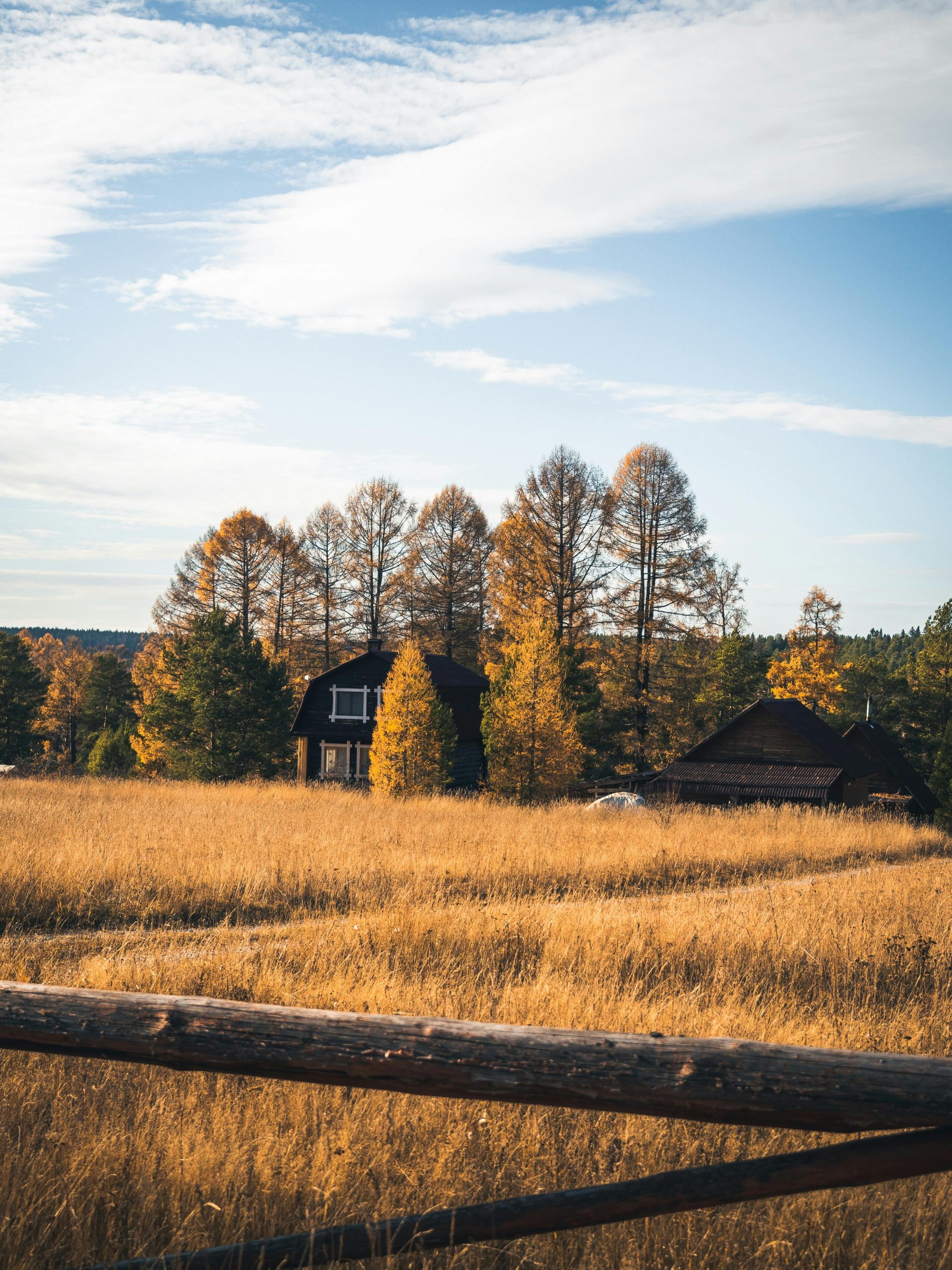Top 5 Tips for a Stress-Free Holiday Season

The holiday season is a time for joy, connection, and celebration. But with busy schedules, long to-do lists, and high expectations, it can also be a stressful period. If you’re feeling the holiday pressure, don’t worry! With a little planning and a few simple strategies, you can make this festive season stress-free and enjoyable. Here are five tips to help you stay calm and make the most of this special time of year.
1. Plan Ahead and Stay Organized
The key to a stress-free holiday season is early preparation. Start by creating a master checklist of everything you need to do, from shopping for gifts to planning holiday meals. Set deadlines for each task and stick to them. Consider using a digital calendar or app to keep track of your commitments and ensure nothing gets overlooked.
Bonus Tip: Shop early to avoid crowded stores and last-minute stress. Many local Saskatoon markets and shops offer unique gifts you won’t find elsewhere!
2. Set a Realistic Budget
The holidays can be expensive, but overspending often leads to stress. Decide on a budget that works for you and prioritize meaningful purchases. Track your expenses as you go, and don’t forget to account for extras like gift wrap, holiday travel, and festive outings.
Local Insight: Saskatoon has many affordable or free holiday events, like outdoor skating at Cameco Meewasin Skating Rink.
3. Delegate Tasks and Ask for Help
You don’t have to do everything yourself! Delegate tasks to family members or friends to lighten your load. Whether it’s decorating the house, wrapping gifts, or preparing holiday meals, sharing responsibilities can make the season more enjoyable for everyone.
Pro Tip: Hosting a potluck-style gathering is a great way to take the pressure off cooking while also enjoying diverse dishes from your loved ones.
4. Embrace Simplicity
Sometimes, less is more. Don’t feel pressured to attend every event or host an elaborate party. Focus on activities and traditions that matter most to you and your family. Simplifying your holiday plans can help you stay present and truly enjoy the moments that count.
Saskatoon Highlight: A cozy night at home watching holiday movies or a winter walk by the South Saskatchewan River can be just as memorable as a big event.
5. Prioritize Self-Care
Amid the hustle and bustle, don’t forget to take care of yourself. Schedule time to relax and recharge, whether it’s enjoying a quiet cup of coffee, practicing yoga, or reading a book. Maintaining a healthy routine with proper sleep, nutrition, and exercise can also help you stay energized and resilient during the holidays.
Quick Idea: Treat yourself to a spa day or a warm beverage from one of Saskatoon’s charming local cafes to unwind.
Make This Holiday Season Your Best Yet
By planning ahead, staying mindful of your priorities, and sharing the workload, you can enjoy a holiday season filled with joy and connection—without the stress. Remember, the holidays are about creating memories and celebrating with loved ones, not achieving perfection.
If you’re considering buying or selling a home during this festive season or in the new year, we’re here to help. Contact us today to learn more about the Saskatoon real estate market and how we can assist you. Wishing you a happy, stress-free holiday season!
Top 5 Fall Home Maintenance Tasks to Keep Your Property in Peak Condition

As the vibrant colours of fall start to take over, it’s time to prepare your home for the upcoming colder months. Fall is a crucial period for homeowners, particularly in regions like Saskatchewan, where harsh winters can put significant wear and tear on properties. By addressing some key maintenance tasks now, you can safeguard your home from potential damage and improve its value. Here are the top five essential fall home maintenance tasks every homeowner should prioritize:
1. Inspect and Clean Gutters and Downspouts
Falling leaves and debris can clog your gutters, leading to water overflow and potential damage to your home’s foundation. This simple yet essential task prevents water from seeping into your basement, protects your siding, and reduces the risk of ice dams forming during winter. Take time to clear out any debris and ensure your downspouts direct water away from the house. For added convenience, consider installing gutter guards to minimize future clogs.
2. Check and Seal Windows and Doors
Drafts from poorly sealed windows and doors can significantly increase your energy bills as your heating system works overtime to keep your home warm. Inspect the caulking around windows and weatherstripping around doors for cracks or gaps. Re-seal and replace where needed to prevent heat loss and improve energy efficiency. Not only will this task help with comfort, but it can also add to the overall value of your property by improving its energy efficiency.
3. Service Your Furnace and HVAC System
Before the cold sets in, it’s essential to ensure your heating system is functioning properly. Schedule a professional inspection and cleaning of your furnace or HVAC system. Replacing filters and checking thermostats will keep your system running efficiently, preventing breakdowns during the peak winter season. A well-maintained furnace not only provides warmth but also prolongs the system’s lifespan, reducing long-term maintenance costs.
4. Winterize Exterior Faucets and Sprinkler Systems
Frozen pipes can lead to expensive repairs, so it’s critical to prepare your home’s plumbing for freezing temperatures. Disconnect garden hoses, drain outdoor faucets, and shut off the water supply to exterior lines. If your home has a sprinkler system, ensure it’s properly drained and winterized to prevent any potential damage. Investing in proper winterization can save you from dealing with burst pipes in the spring.
5. Inspect the Roof and Chimney
Your roof and chimney are key defense points against the elements. Check for any damaged, loose, or missing shingles that could allow water to leak into your home. It’s also a good time to inspect the flashing around vents and chimneys to ensure a tight seal. If you have a wood-burning fireplace, be sure to schedule a chimney cleaning to remove creosote buildup, which can pose a fire hazard during winter months.
By staying proactive with these fall maintenance tasks, you can keep your home in top condition, prevent costly repairs, and ensure a cozy, safe living environment throughout the colder months. Not only do these tasks preserve the integrity of your property, but they also contribute to its long-term value—something every homeowner and potential buyer appreciates.
Planning to buy or sell a home this fall? Get in touch with our team today for expert advice on how to maximize your property’s value and appeal.
Top 5 Must-Attend Events in Saskatoon This September

As the crisp fall air begins to settle over Saskatoon, the city comes alive with an exciting lineup of events that celebrate the best of our local culture, food, and entertainment. Whether you’re new to the area or a long-time resident, September offers a variety of activities that are perfect for all ages. From vibrant street fairs to unique outdoor experiences, here are the top five events you won’t want to miss this September in Saskatoon.
1. Broadway Street Fair – September 7
Kicking off the month with a bang, the Broadway Street Fair is one of Saskatoon’s most beloved annual events. Held in the heart of the historic Broadway District, this fair transforms the streets into a lively hub of arts, crafts, food, and entertainment. From local vendors selling handmade goods to street performers showcasing their talents, there’s something for everyone at this vibrant community event.
- What to Expect: Shop for unique local products, enjoy delicious street food, and take in live music and performances throughout the day. The family-friendly atmosphere makes it a great outing for all ages, and you’ll get a taste of Saskatoon’s creative spirit.
- Tip: Arrive early to explore the many stalls before the crowds build, and don’t forget to check out the local boutiques and cafes that line the street.
2. Glow Stand Up Paddleboarding – September 18
For a truly unique outdoor experience, try Glow Stand Up Paddleboarding on September 18th. Hosted on the South Saskatchewan River, this event offers participants the chance to paddleboard under the stars with boards lit up by submersible lights. As you glide across the surface of the water under cover of darkness, you’ll be amazed by the glow from beneath – as underwater plants and animals are illuminated in all their glory
- What to Expect: Enjoy a guided paddleboarding session that takes you along the calm waters of the river as the sun sets and the city lights begin to twinkle. The illuminated boards add a mesmerizing glow to the experience, making it both peaceful and unforgettable.
- Tip: Dress in layers to stay warm as the evening cools down, and be sure to book your spot in advance, as this event tends to sell out quickly.
3. Whisky Tasting at Nutana Legion – September 7
If you’re a fan of fine spirits, the Whisky Tasting at Nutana Legion is a must-attend event. This guided tasting on September 7th offers an evening of exploration into the world of whisky, with a selection of high-quality whiskies to sample and savor.
- What to Expect: Led by an expert in the field, the tasting will walk you through the nuances of different whiskies, including their origins, flavors, and production processes. It’s a great opportunity to expand your palate and meet fellow whisky enthusiasts.
- Tip: Consider bringing a notebook to jot down your thoughts on each whisky. The event is also a wonderful chance to pick up a few bottles for your collection or as gifts.
4. Saskatoon Ribfest – September 13-15
Get ready for a weekend of mouthwatering BBQ at the Saskatoon Ribfest, running from September 13th to 15th. This annual festival is a carnivore’s paradise, featuring some of the best ribbers from across Canada serving up smoky, saucy ribs, pulled pork, and other BBQ favorites.
- What to Expect: Alongside the delicious food, you can enjoy live music, beer gardens, and family-friendly activities. Ribfest is held at Diefenbaker Park, providing plenty of space to spread out, relax, and enjoy the festivities.
- Tip: Go hungry and be prepared to sample ribs from multiple vendors. Each one has its own unique flavor profile, so a little taste test competition is part of the fun.
5. Nuit Blanche YXE – September 28
Art lovers, mark your calendars for Nuit Blanche YXE on September 28th. This all-night contemporary art festival takes over downtown Saskatoon with immersive installations, performances, and interactive exhibits that light up the night.
- What to Expect: Wander through the streets as local and international artists transform public spaces with innovative works of art. The event encourages exploration and interaction, making it a dynamic and engaging way to experience the city.
- Tip: Wear comfortable shoes and be prepared for lots of walking as you explore different exhibits. Keep an eye on the event map to ensure you don’t miss any of the standout installations.
September in Saskatoon is packed with diverse events that cater to a wide range of interests, from foodies and art enthusiasts to those looking for unique outdoor experiences. Whether you’re exploring the Broadway Street Fair or savoring the flavors at Ribfest, these top five events are sure to make your September in Saskatoon one to remember.
Looking for more tips on living in Saskatoon or interested in finding your dream home in this vibrant city? Contact us today for personalized real estate advice and let us help you discover all that Saskatoon has to offer!
Achieve a Stunning Summer Yard: Top 5 Tips for Saskatchewan Homeowners

Summer in Saskatchewan is a time to embrace the outdoors, enjoy the long days, and make the most of your beautiful yard. Whether you’re looking to enhance your curb appeal or create a relaxing outdoor oasis, these top five tips will help you achieve a gorgeous yard this summer.
1. Choose the Right Plants for Your Climate
Saskatchewan’s unique climate, with its hot summers and cold winters, requires selecting plants that can thrive in these conditions. Opt for native plants such as Prairie Coneflowers, Wild Bergamot, and Purple Prairie Clover. These plants are not only adapted to the local climate but also support local wildlife. Consider drought-resistant plants like succulents and ornamental grasses, which require less water and maintenance.
2. Invest in Quality Soil and Mulch
Healthy soil is the foundation of a beautiful yard. Invest in high-quality soil rich in organic matter to give your plants the nutrients they need. Adding compost can improve soil structure, water retention, and fertility. Mulch is another essential component. It helps retain moisture, suppress weeds, and regulate soil temperature. Organic mulches like wood chips or straw are excellent choices for flower beds and vegetable gardens.
3. Water Wisely
Watering your yard efficiently is crucial during the hot summer months. Water early in the morning or late in the evening to reduce evaporation and ensure your plants get the moisture they need. Consider installing a drip irrigation system or soaker hoses to deliver water directly to the roots, minimizing waste. Also, remember to water deeply but less frequently to encourage deep root growth, making your plants more drought-resistant.
4. Create Outdoor Living Spaces
Transform your yard into an extension of your living space by creating inviting outdoor areas. Add comfortable seating, a dining area, or a fire pit to enjoy warm summer evenings. Incorporate elements like pergolas or shade sails to provide relief from the sun. Use outdoor rugs, cushions, and lighting to create a cozy and stylish atmosphere. These additions enhance your enjoyment of the yard but and increase your property’s value.
5. Maintain Regularly
Consistent maintenance is key to keeping your yard looking its best. Mow the lawn regularly, but avoid cutting it too short to prevent stress and encourage healthy growth. Trim and prune shrubs, trees, and flowers to maintain their shape and promote blooming. Look for pests and diseases, and address any issues promptly. Regularly clean and organize outdoor spaces to keep them inviting and functional.
A gorgeous yard is within reach with these simple yet effective tips. Embrace the beauty of Saskatchewan’s summer and transform your outdoor space into a haven of beauty and relaxation. Whether you’re looking to boost your curb appeal or create a personal retreat, these strategies will help you make the most of your yard. Happy gardening!

 Facebook
Facebook
 X
X
 Pinterest
Pinterest
 Copy Link
Copy Link






